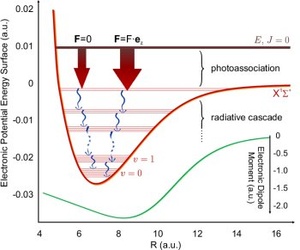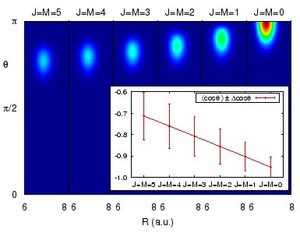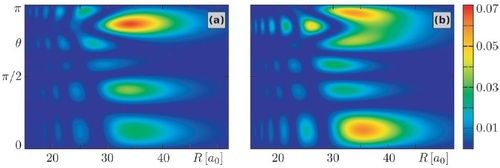Ultracold Polar Molecules in External Fields
Introduction
Over the past decade investigations of ultracold quantum gases have been revealing a wealth of intriguing phenomena. In particular, ultracold molecular systems represent a paradigm including molecular Bose-Einstein condensates. External fields on the other hand are equally important for the preparation and control of ultracold systems. They are used for cooling and trapping as well as for quantum state preparation or the tuning of atomic/molecular interactions. Due to their permanent electric dipole moments, heteronuclear polar dimers deserve a special focus. They open up the possibility to create dipolar quantum gases with long-ranged interactions which introduces exceptional properties for the corresponding quantum systems. Electric fields play here an important role due to their immediate impact on polar systems which leads for isolated molecules amongst others to rotational orientation and alignment.

Photoassociation of Molecules in Electric Fields
As mentioned above, the quest for polar molecular quantum gases attracts a lot of attention. One very promising way to achieve such ultracold ground-state heteronuclear molecular gases is the photoassociation scheme, as depicted in the picture below. In our group we investigate this process in the presence of an external electric field. As it turns out, the application of the electric field is favourable since then the direct production of s-wave molecules is possible.

Orientation and Alignment in Static and Laser Fields
Orienting polar molecules is of particular interest for exploiting the dipolar interaction between polar molecules. In our group, we investigate the steric properties of heteronuclear dimers exposed to static or laser fields. We go beyond the so-called rigid rotor approximation by solving the full Schrödinger equation including both the rotational and the vibrational degree of freedom.
Field Impact on Rovibrational Dynamics
Highly excited rovibrational levels of polar dimers are particularly susceptible to external fields since they are embedded in a very dense rovibrational spectrum. We study the effect of a strong static homogeneous electric field on such highly excited states and explore the evolution of the states next to the dissociation threshold. The rotational and vibrational dynamics are greatly influenced by the field; effects such as orientation, angular motion hybridization and squeezing of the vibrational motion are found.
